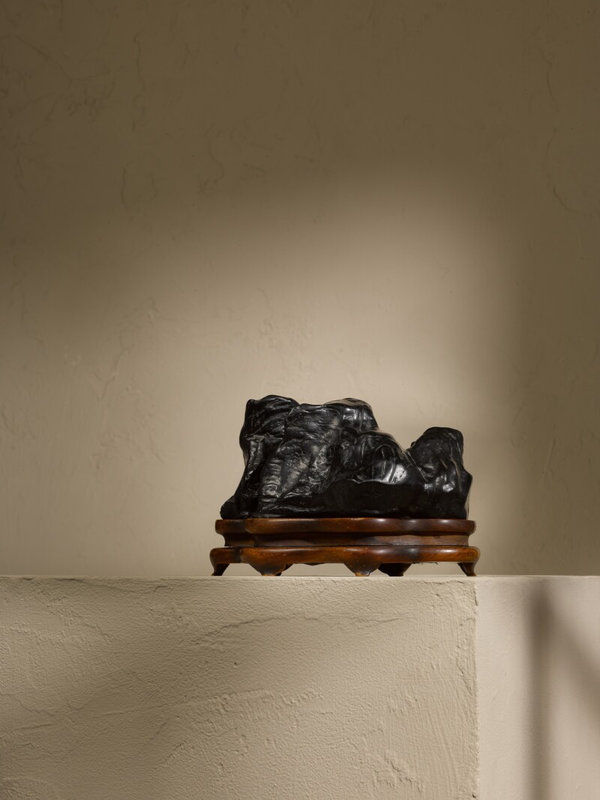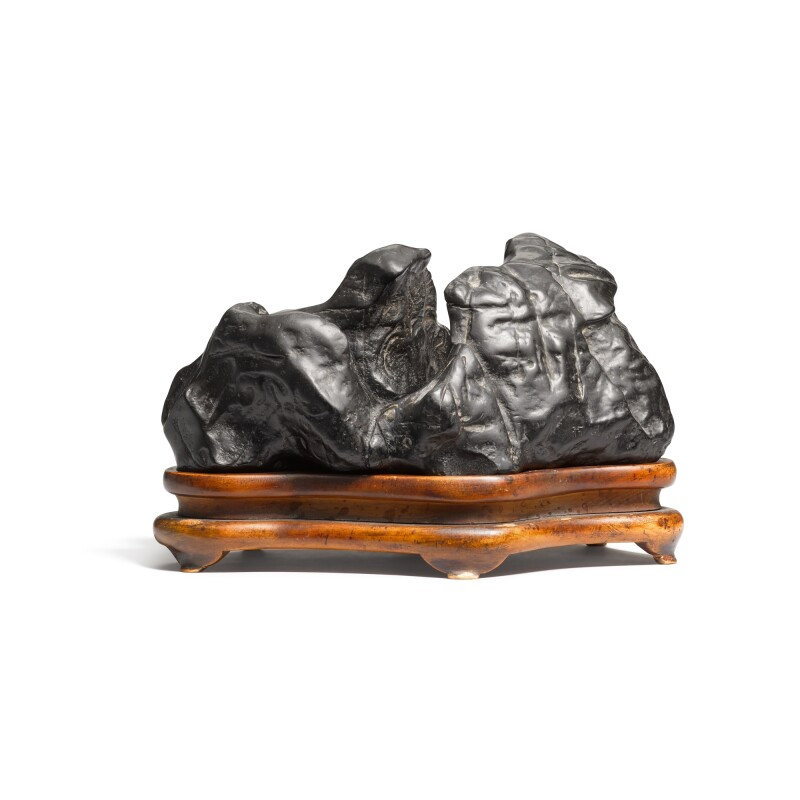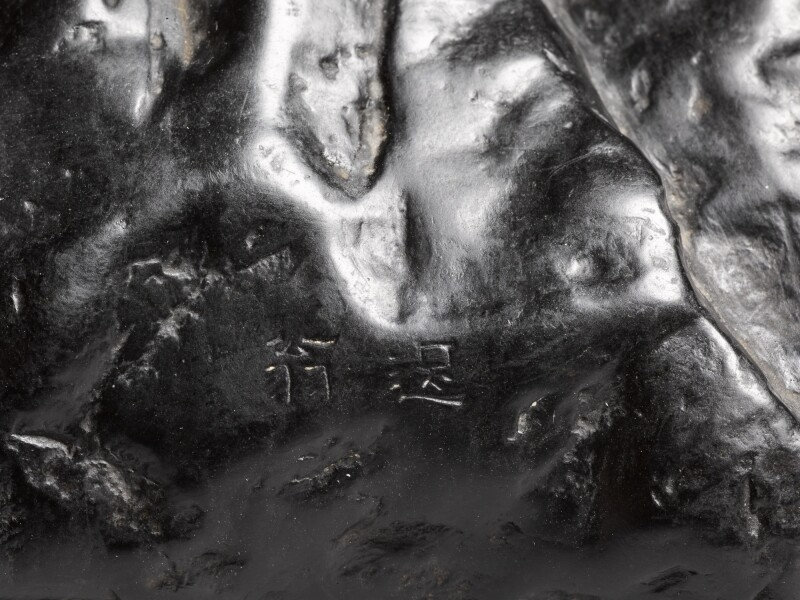An inscribed Lingbi scholar's rock, The Lingbi: Possibly Song-Yuan Dynasty, The Yumu stand: Qing Dynasty, 18th-19th Century
Lot 224. An inscribed Lingbi scholar's rock. The Lingbi: Possibly Song-Yuan Dynasty. The Yumu stand: Qing Dynasty, 18th-19th Century. Height 36.5 cm, 14¼ in. Lot sold: £94,500 (Estimate: £70,000 - 90,000). © 2022 Sotheby's.
the base with an eight-character inscription reading Yuanfu Ernian, Mifu and Tuiweng.
Provenance: The Richard Rosenblum Collection.
Literature: Valerie C. Doran, 'Exploring the Magic Mountain: An Interview with Richard Rosenblum', Orientations, March 1996, p. 77-83, fig. 5.
Robert D. Mowry, Worlds within Worlds: The Richard Rosenblum Collection of Chinese Scholars' Rocks, Cambridge, 1996, p. 154-158, no 3.
Exhibited: The Richard Rosenblum Collection of Chinses Scholars Rocks, Asia Society, New York, 1996, cat. no. 8.
Note: This sophisticated stone, in the form of three rolling peaks, appears to be one of the earliest extant examples from the famous region of Lingbi, in the northern Anhui province of China. In Dongtian qinglu (Pure Records of the Cave Heaven), Zhao Xigu of the Song dynasty (960-1279) states 'Lingbi stones are located not on the mountains or valleys but deep within the earth. They can be found only by excavating. Their colour is like black lacquer, and they may be laced with thin, white veins like jade.' With its overall deep black colour, smooth and lustrous surfaces, as well as massed form with limited perforations, the present piece would have been highly prized by scholars since the Song / Yuan (1279-1368) dynasty.
With three gently rounded tops and sloping sides around them, this rock might have been viewed as a cluster of three mountains separated by gorges, or more specifically as Sanxianshan (‘Three Mountains of the Immortals’). It is traditionally believed that in the Eastern Sea, across from the Jiangsu coast, there are three isles named Penglai, Fangzhang and Yingzhou. On these imaginary mountains, one could find immortals living in pavilions and palaces built of gold and silver, and the highly sought-after elixir of life.
Petrographic analysis, conducted by the Straus Center for Conservation and Technical Studies of the Harvard Art Museum, unveiled that the material of this stone is almost identical to that of two other scholars’ rocks from the Richard Rosenblum Collection, illustrated in Robert D. Mowry, Worlds within Worlds: The Richard Rosenblum Collection of Chinese Scholars' Rocks, Cambridge, 1996, cat. nos 1 and 9, suggesting that the three pieces would have come not only from the same cave at Lingbi, but even from the same area within the cave. Although the likeness has no direct relationship to their dates of harvest, the piece named ‘Chime in the Form of a Coiled Dragon’ (cat. no. 1) is also attributed to Song / Yuan.
Sotheby's. Monochrome, London, 2 November 2022

/https%3A%2F%2Fprofilepics.canalblog.com%2Fprofilepics%2F1%2F0%2F100183.jpg)
/https%3A%2F%2Fstorage.canalblog.com%2F03%2F02%2F119589%2F96711876_o.jpg)
/https%3A%2F%2Fstorage.canalblog.com%2F11%2F31%2F119589%2F94773502_o.jpg)
/https%3A%2F%2Fstorage.canalblog.com%2F20%2F83%2F119589%2F94772815_o.jpg)
/https%3A%2F%2Fstorage.canalblog.com%2F26%2F72%2F119589%2F75604929_o.jpg)
/https%3A%2F%2Fstorage.canalblog.com%2F59%2F60%2F119589%2F26458628_o.jpg)














/http%3A%2F%2Fstorage.canalblog.com%2F82%2F69%2F119589%2F129451810_o.jpg)
/http%3A%2F%2Fstorage.canalblog.com%2F38%2F80%2F119589%2F110520107_o.jpg)
/image%2F1371349%2F20240416%2Fob_3b1c51_telechargement.jpg)
/image%2F1371349%2F20240229%2Fob_dd1e87_428480268-1625288708241142-72836030854.jpg)